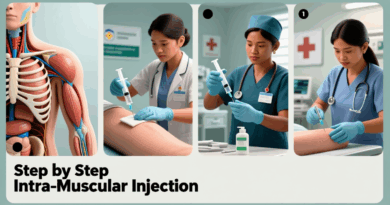Gallbladder Diseases: Causes, Symptoms, Diagnosis, and Treatment
The gallbladder, a small pear-shaped organ located beneath the liver, can be affected by some diseases due to various factors. These diseases can cause discomfort and disrupt digestive processes. Gall bladder function is to store and release bile which is important for the digestive system. In this article, we will explore the causes, symptoms, diagnosis, and treatment options for these conditions, providing you with a comprehensive understanding of these conditions.
Causes of Gallbladder Diseases:
- Gallstones:
The most common cause of these diseases is the formation of gallstones. The stones can develop when there is an imbalance in the substances that make up bile, leading to their crystallization. - Gallbladder Inflammation:
Known as cholecystitis, can occur due to gallstones blocking the cystic duct or as a result of infections. - Biliary Dyskinesia:
This condition is an abnormal gallbladder motility, where the organ fails to contract and release bile properly.
Symptoms:
- Abdominal Pain:
The hallmark symptom of gallbladder disease is pain in the upper right or middle abdomen, often after meals or fatty foods. The pain can be sharp, cramp-like, or radiate to the back or shoulder. - Nausea and Vomiting:
Many individuals with these diseases experience bouts of nausea and vomiting, especially during or after meals. - Jaundice:
If gallstones or inflammation block the bile ducts, it can lead to yellow skin and eyes due to the buildup of bilirubin. - Digestive Issues:
Some people may experience indigestion, bloating, gas, and changes in bowel movements, such as diarrhea or clay-colored stools.
Diagnosis:
- Medical History and Physical Examination
- Imaging Tests: Ultrasound is commonly used to visualize the gallbladder and detect gallstones. Other tests, such as a CT scan or MRI, may provide more detailed images if needed.
- Blood Tests: Blood tests can help assess liver function, check for signs of infection, and measure levels of certain enzymes and bilirubin.
Treatment Options for Gallbladder Diseases:
- Conservative Management:
If gallstones are small and asymptomatic, a wait-and-watch approach with dietary modifications may be recommended. - Medications:
Certain medications, such as bile acid pills, can be prescribed to help dissolve cholesterol gallstones over a long period. However, this process is slow and not effective for all types of stones. - Surgical Intervention:
The most common treatment for symptomatic gallbladder diseases is cholecystectomy, the surgical removal of the gallbladder. It can be performed through minimally invasive laparoscopic surgery or traditional open surgery.
SUMMARY
Gallbladder diseases, primarily caused by gallstones, can significantly impact a person’s quality of life. Recognizing the symptoms and seeking timely medical attention is important for diagnosis and management. Whether through conservative measures, medication dissolution, or surgical intervention, effective treatment options are available to alleviate symptoms and restore normal digestive function.
If you have questions you can drop them below in the comment section. You can contact us here: Google page – Helalmedical, or Facebook page. We offer quick and convenient testing options.




